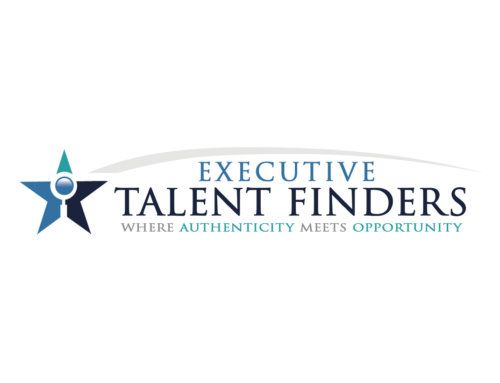I live near a wonderful community called Verrado, located in a Southwestern suburb of Phoenix, AZ. Verrado is derived from the Spanish word “verdad” which means truth and authenticity. It is a highly social community with expansive parks and biking and hiking trails filled with happy neighbors and pets. During their annual Founder’s Day celebration, Verrado brings in national artists like Train, Andy Grammer and the B-52s to their small-town stage. They also have a variety show so families can be entertained by their own kids and neighbors.
It’s truly a unique community with wonderful traditions. Everyone from the vendors at the farmer’s market to the yoga studio that rents space at the Verrado gym to the local grocery store is friendly, smiling and engaged. Verrado keeps their small-town culture alive and thriving, monitoring with tenacity their incoming vendors and regularly checking in with residents on how to improve and continue to cultivate their thriving community culture, and I can’t help but think about how companies can do the same.
They have successfully implemented three vital keys for the community: the cornerstone, the keystone and the capstone.
Cultivating the Cornerstone In Our Workplace: Core Values
The cornerstone is the first stone, the foundation which represents the character, personality, core values and the heartbeat of the organization. It is the purpose that is fueling the passion. The cornerstone is the “capsule” that houses the wishes, desires and intent of the founders. It is like the air that we breathe. It can be fresh and engaging or toxic and stressful based on the decisions and direction of the executive team.
Whether you are a founder of a small entrepreneurial startup or a larger corporation, it’s vital to identify what you are cultivating. The truth is, whether you’ve fully articulated your cultural vision for your organization or not, it is being formulated minute by minute, hour by hour and day by day. For many CEOs and entrepreneurs, setting up a cultural vision may seem like a secondary issue that is nothing but an extraneous piece of the puzzle that will just naturally materialize when the right talent is assembled. Could you potentially get to your chosen cultural destination without a road map? Yes. Would you climb Mount Everest without the aid of a Sherpa? Indeed not!
If you asked your employees today to describe your company culture, what would they say? How would you describe your company culture? Is it aligned with your core values? If not, simply begin anew today. Set the intention, clarify the cultural values and objectives and move forward just like you would with any strategic decision, all the while utilizing the measuring stick of “authenticity.” The CEO and executive leadership team must embody the corporate culture and model the core values. Employees don’t care what you say, they watch how you behave.
Cultivating the Keystone In Our Workplace: Attracting Talent
The keystone is the crowning central stone at the apex of the arch that holds everything together. If you can attract the right people with the right mindset, skillset, energy and passion, you will thrive. Just as neighborhoods change over time with new arrivals along with new vendors moving in and out, the same is true with corporations. Leadership changes, shifts in strategy, as well as recruitment of new talent, and the inevitable movement of employees into different departments can impact your company’s culture over time.
The reality is you are either moving towards or away from cultivating your ideal and authentic corporate culture, so it’s important to revisit this with the executive leadership team regularly. It is essential that through all of these “iterative moves” you don’t lose sight of who your “keystones” are. They are the right talent hired for the right roles, the “A” players who don’t need to be motivated, the candidates who are driven and aligned to your goals.
How do you find such talent? Be methodical in your recruitment and selection process. Utilize discovery and assessment tools and gain data-driven insights before you hire. Implement in-depth behavioral interviews. Meet candidates informally in various settings. Invite candidates to social engagements. When you take a more structured and robust, methodical approach to attraction, selection, and recruitment, you will gain invaluable insights. If in doubt, don’t hire. One bad apple can indeed spoil the whole bunch.
Cultivating The Capstone In Our Workplace: Communicating And Celebrating Traditions And Milestones
Last but certainly not least is the capstone. The capstone is the protective exterior stone that is the enduring bond that holds the community together. Creating moments and memories whereby employees can display cultural unity — collaborating, sharing and celebrating milestones — will do much more for your culture than any slogan, value statement or launch party.
Tony Hsieh, the CEO of Zappos, has developed a “Culture Book”, whereby employees answer the question, “What does the culture mean to you?” The book is used as an onboarding tool for new employees to gain insights to quickly align with the organization. You can commemorate and celebrate milestones with a “Culture Day,” or maybe you, too, can bring in national artists or have a variety show for your employees and their families. Your employees devote so much of their lives to you, your workplace and your vision. Show them you care, and when times get tough, they will remember who had their back, who acknowledged them and helped them push through.
If we are to succeed in cultivating our authentic cornerstones, keystones and capstones for our organizations, I believe we will elevate our workplace cultures, bring like-minded professionals with us, and leave an enduring legacy that is living, breathing and timeless.
Sheryl Sandberg, COO of Facebook and author of Lean In: Women, Work, and the Will to Lead, said it best: “Presenting leadership as a list of carefully defined qualities (like strategic, analytical, and performance-oriented) no longer holds. Instead, true leadership stems from individuality that is honestly and sometimes imperfectly expressed. Leaders should strive for authenticity over perfection.”
This article first appeared on forbes.com. See original here.




